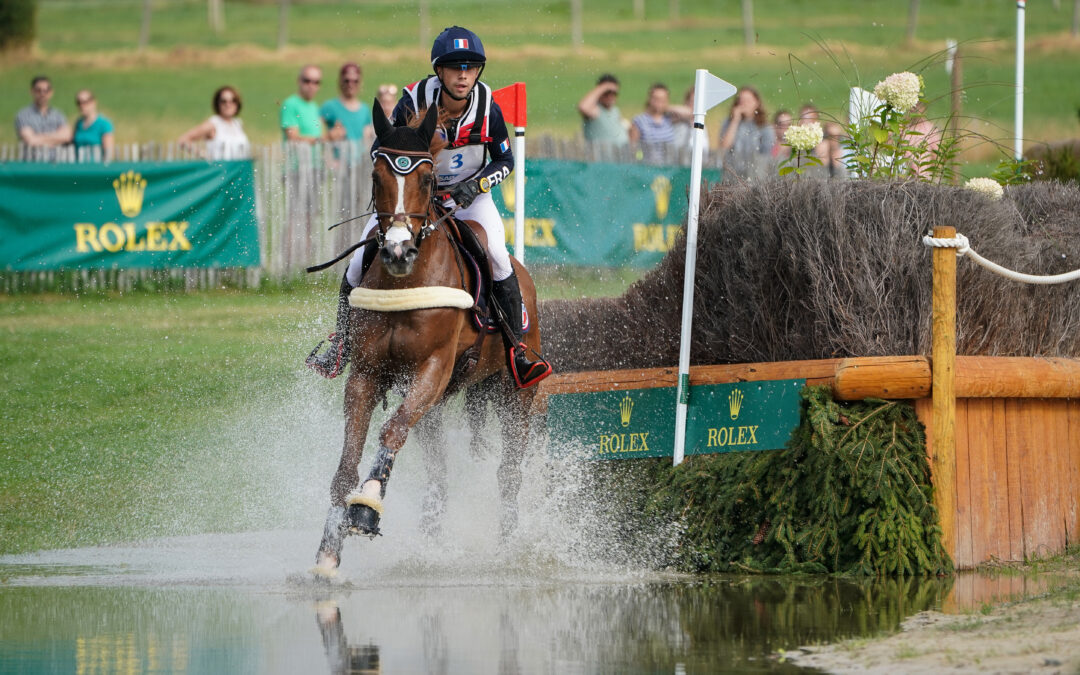We had the chance to talk to Alexis Goury, an french eventing rider, about his use of EQUIMETRE. Discover, through this discussion, how he trains his horses and integrates the connected sensor into his daily routine.
Could you please introduce yourself?
I am Alexis Goury, I prepare horses for eventing, young or old horses for sport, development and trade. I also do a little breaking-in.
How did you discover EQUIMETRE and how long have you been using it?
EQUIMETRE came to us through Dr. Emmanuelle VAN ERCK, at least 3 or 4 years ago. At the time, I had a horse with a nosebleed in my stables, so Emmanuelle told me about EQUIMETRE so I could monitor it, and that’s how I started using it. After that, it became a tool that I integrate into my routine, particularly in the follow-up of preparation gallops.
Why did you decide to equip yourself with EQUIMETRE?
When I was at the Pôle France in Saumur, we used another, more simple tool, which only monitored the horse’s cardio. When I discovered EQUIMETRE – through Emmanuelle – it gave me a lot more information. It’s become a routine, a habit we’ve adopted: do a canter, then look at the figures and compare them. Of course, it gives us additional information on the preparation of our horses. It doesn’t replace our feeling, but it does give us a lot of fairly precise information that we wouldn’t have without it.
How do you use the system on a daily basis?
I only use it when I give my horses preparatory gallops. For eventing, it’s almost every week. I try to use it as much as possible so that I can have references and compare the results of each horse, from one gallop to another, to know if it’s harder or softer. I also use it when I get new horses, to see how they’re behaving, their heart rate data.
I also use it in competitions. During events, I can put it everywhere, because it’s authorized by the FEI. I know that the Germans have it almost systematically, I see it regularly on their horses. So I put it on certain tests to see the cardiac peaks and how the horse behaves during the course.
Which parameters do you look at regularly? Your favorite setting?
Max heart rate (HR max), to find out whether or not horses ride high, whether they are always the same depending on the effort… Then I like to look at the percentage of recovery after effort and the percentage of recovery 15 minutes after effort, which give you an idea of the quality of the horse’s recovery.
What changes have you seen since you started using EQUIMETRE?
You know your heart rate, and even if you want to prepare for a tough test, you’re not going to go beyond it. If a horse doesn’t go above 180 in full gallop, he won’t go above that. But that doesn’t mean he’s not ready. That’s just the way it is, and it’s important to respect it and its integrity.
Have you ever had horses on which the use of ECG has made it possible to investigate pathologies?
Yes, especially on horses with nosebleeds. We’ll take a look at the ECG, to see if they’ve already got a good heart rate, if the effort has been absorbed and if recovery is good.
What do you think about the integration of technology in the sports world and in equine health?
I think this is essential. At the same time, on the human level, we have highly developed technologies. Horses don’t talk, so we have to really push technology to try and find the little details that are still missing. Obviously, new technologies are not going to replace the eye, sensation and the human being. But they are possibilities, and it would be a pity not to use them. Some technologies are gadgets, but EQUIMETRE is really interesting.
Keywords: Alexis Goury, french eventing rider, EQUIMETRE, equin physiolgy


